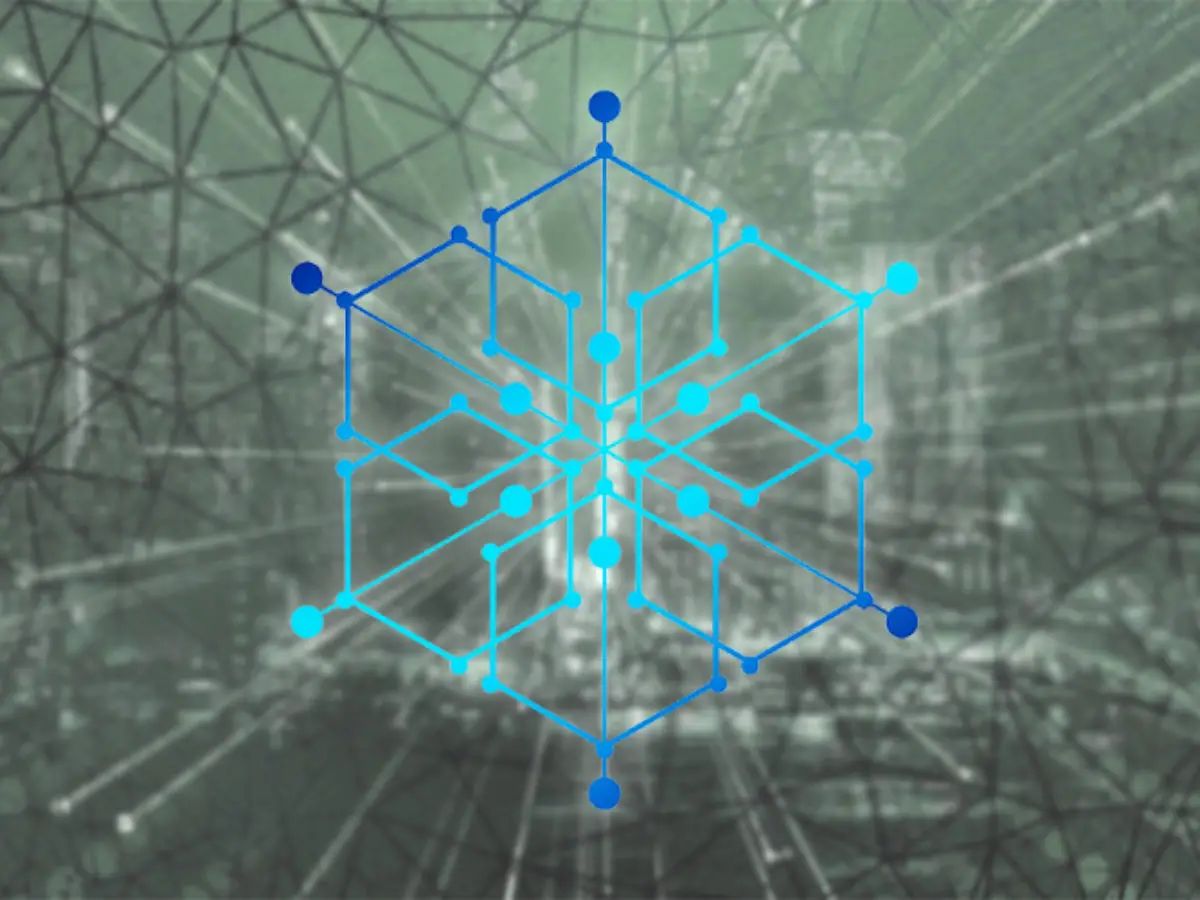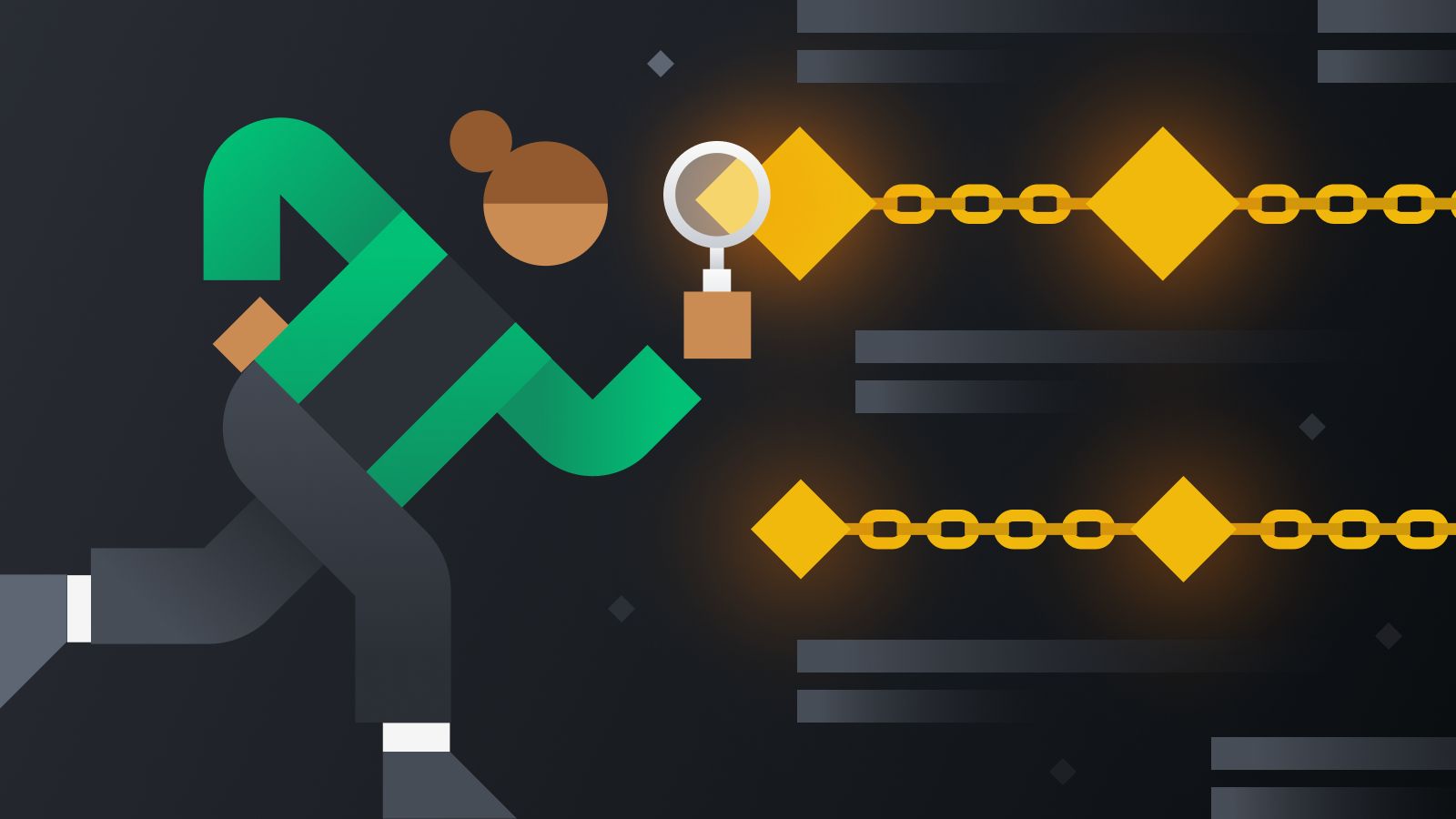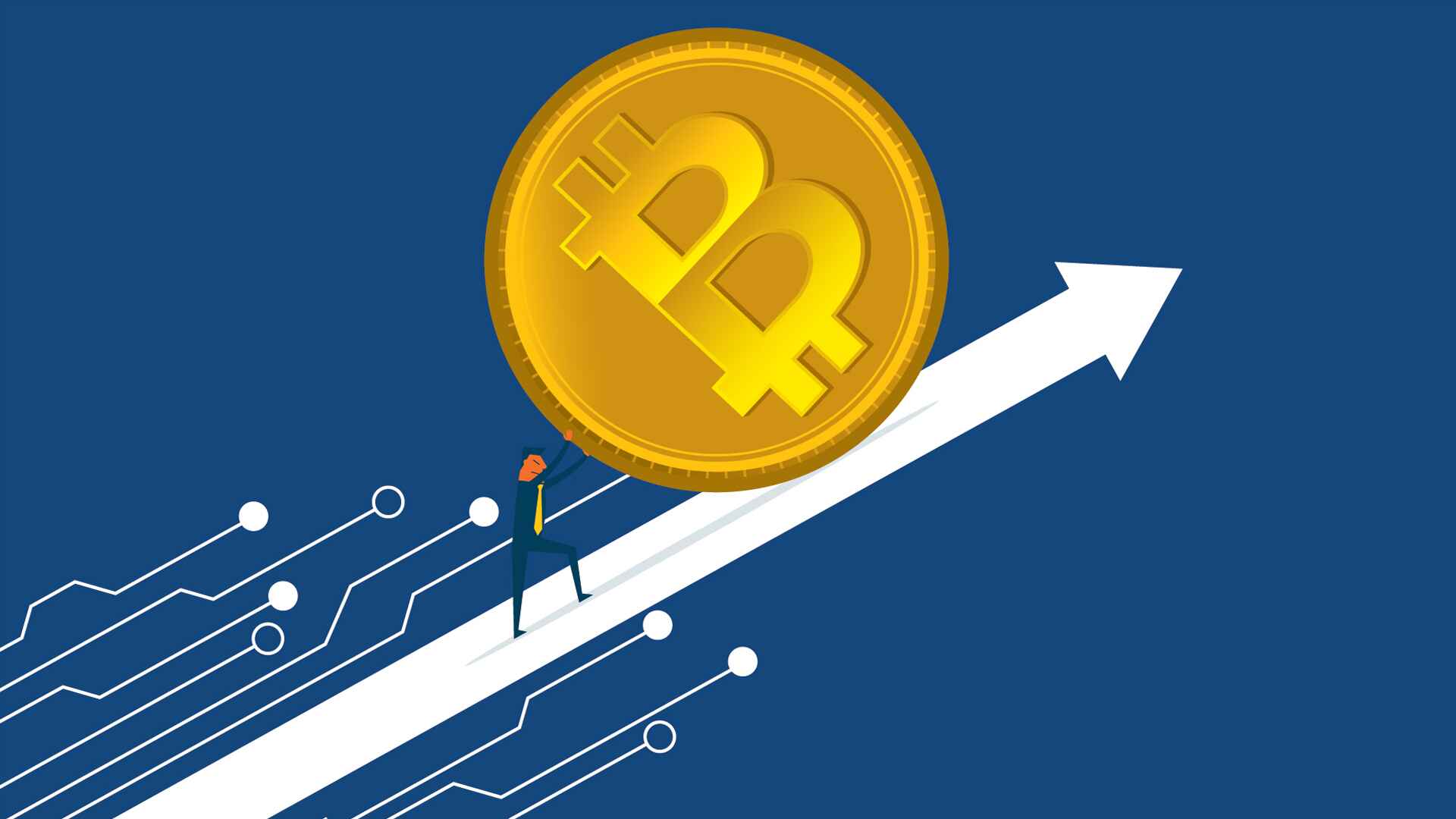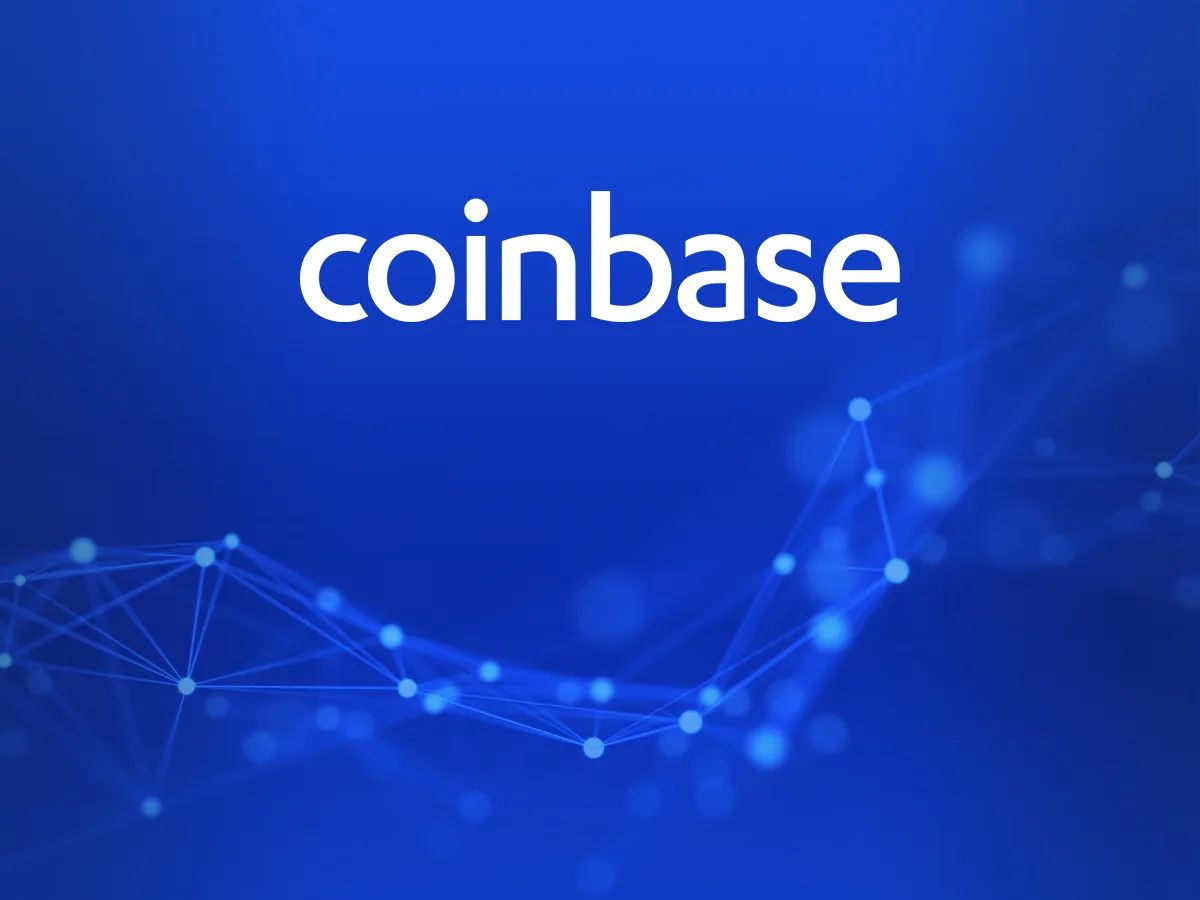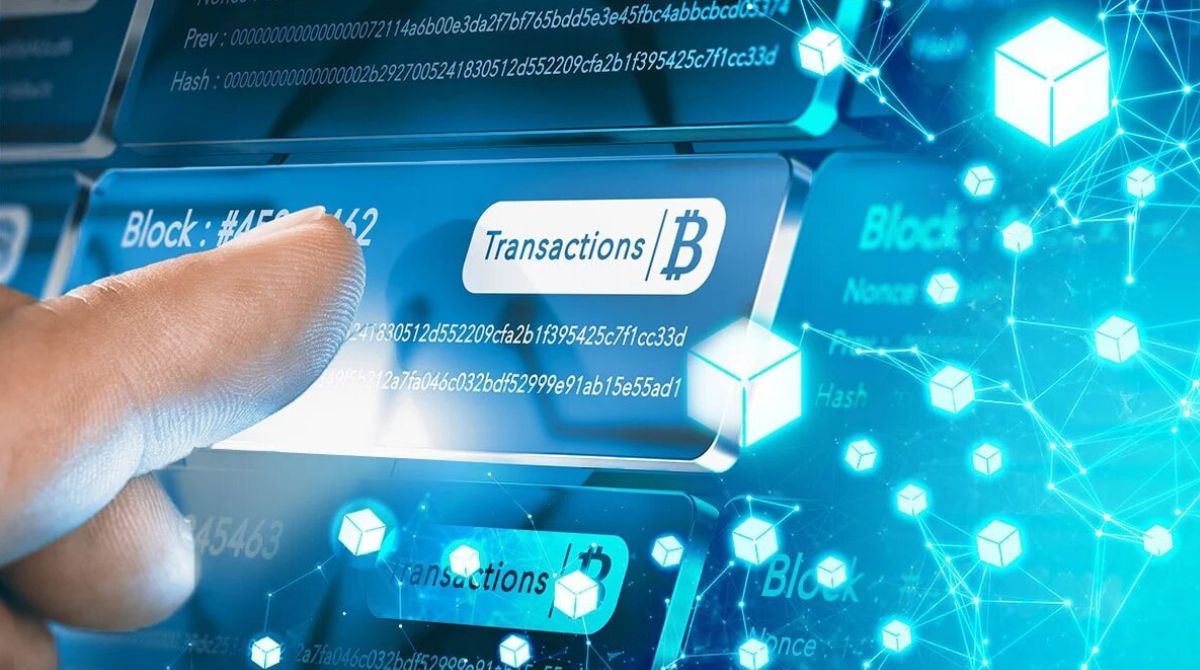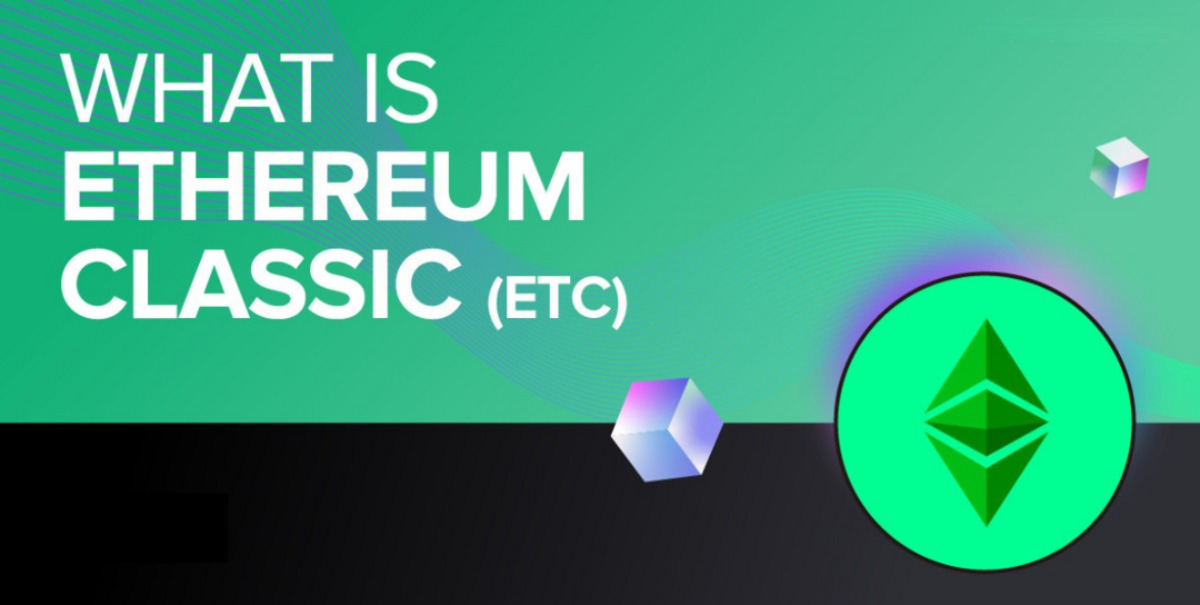Introduction
Blockchain technology has revolutionized many industries, from finance to supply chain management. As the backbone of cryptocurrencies like Bitcoin and Ethereum, blockchain has gained widespread popularity and recognition. But what exactly is blockchain and how does it work? If you’re curious to learn more about this groundbreaking technology, look no further.
Blockchain can be defined as a decentralized and distributed ledger that securely records and verifies transactions across multiple computers or nodes. Rather than relying on a single central authority, blockchain relies on a network of computers called nodes to validate and store data. This ensures transparency, immutability, and security of the recorded data.
At its core, blockchain consists of a series of “blocks” that contain data. Each block is connected to the previous one through a unique cryptographic hash, creating a chain of interconnected blocks. This chain structure ensures the integrity and chronological order of the recorded transactions.
So how does blockchain actually work? When a new transaction occurs, it is grouped with other transactions into a block. The block is then verified by multiple nodes in the network through a consensus mechanism, such as proof of work or proof of stake. Once the block is verified and added to the blockchain, it becomes a permanent part of the ledger and cannot be altered or tampered with.
There are different types of blockchains, including public, private, and consortium blockchains. Public blockchains, like Bitcoin and Ethereum, are open to anyone who wants to participate in the network. Private blockchains, on the other hand, are restricted to a specific group of participants, often within an organization. Consortium blockchains are a hybrid model, where multiple organizations come together to govern and maintain the shared blockchain network.
Now that we have a basic understanding of what blockchain is and how it works, let’s explore the tools that can help us view and analyze blockchain data. Whether you’re a cryptocurrency enthusiast or a blockchain developer, these tools will provide invaluable insights into the world of blockchain.
What is Blockchain?
Blockchain is a foundational technology that underpins cryptocurrencies like Bitcoin and Ethereum, but its potential goes far beyond digital currencies. At its core, blockchain is a decentralized and distributed ledger that securely records and verifies transactions across multiple computers or nodes.
Traditionally, financial transactions or data exchanges rely on a central authority such as a bank or government institution to validate and maintain records. However, blockchain eliminates the need for a central authority by relying on a network of computers called nodes. These nodes work together to validate and store data in a transparent, secure, and tamper-proof manner.
Each transaction is grouped with others into a “block” and added to the blockchain. Each block is connected to the previous one through a unique cryptographic hash, creating a chain of interconnected blocks. This chain structure ensures the integrity and chronological order of the recorded transactions.
One of the key features of blockchain is its immutability. Once a transaction is added to the blockchain, it becomes nearly impossible to alter or delete. This is because changing a block would require altering the subsequent blocks as well, making it computationally infeasible and costly. Therefore, blockchain provides a high level of security and trust in the recorded data.
Blockchain also operates on a consensus mechanism, which ensures that all nodes in the network agree on the validity of each transaction. This mechanism varies depending on the blockchain implementation. Bitcoin, for example, uses a proof-of-work consensus algorithm where nodes compete to solve complex mathematical problems to validate transactions and add blocks to the chain. Other blockchains may use different mechanisms such as proof of stake or practical Byzantine fault tolerance.
Beyond cryptocurrencies, blockchain has enormous potential for applications in various industries. For example, it can be utilized in supply chain management to track the movement of goods, in healthcare to securely store and share patient records, in voting systems to ensure transparency and integrity, and in decentralized finance to facilitate peer-to-peer lending and financial transactions without intermediaries.
In summary, blockchain is a decentralized and distributed ledger technology that provides a secure, transparent, and tamper-proof record of transactions. It eliminates the need for a central authority, ensures data integrity, and opens up a myriad of innovative possibilities across industries.
How Does Blockchain Work?
Blockchain technology operates on a set of principles and mechanisms that make it a secure and transparent system for recording and verifying transactions. Understanding how blockchain works is crucial to grasping its potential and applications. Let’s delve into the core components and processes that drive blockchain technology.
When a transaction occurs, it is grouped with other transactions into a block. This block contains the transaction data along with a unique identifier called a cryptographic hash. The hash is a mathematical representation of the block’s contents and acts as a digital fingerprint, making it virtually impossible to alter the data without generating a different hash.
Once a block is created, it needs to be validated by nodes in the blockchain network. Nodes are individual computers or devices participating in the network, and they play a crucial role in maintaining the integrity of the blockchain. To validate a block, nodes must agree on its legitimacy by solving complex mathematical puzzles or through a consensus mechanism, depending on the blockchain’s design.
The most well-known consensus mechanism is the proof-of-work (PoW) algorithm used by Bitcoin. In PoW, nodes compete to solve computational puzzles, requiring significant computational power and energy consumption. The first node to solve the puzzle broadcasts the solution to the network, and if the solution is valid, the block is added to the blockchain. This process, known as mining, ensures that only valid and legitimate transactions are added to the blockchain.
Other blockchains, like Ethereum, are moving towards a proof-of-stake (PoS) consensus algorithm. In PoS, instead of using computational power, nodes are chosen to validate transactions based on the number of coins they hold or are willing to “stake” as collateral. This approach reduces energy consumption and allows for faster transaction confirmation times.
Once a block is validated and added to the blockchain, it becomes a permanent part of the ledger. The blockchain’s decentralized nature ensures that multiple copies of the ledger are distributed and synchronized across different nodes in the network. This redundancy makes the blockchain resistant to single points of failure and provides an extra layer of security against data loss or corruption.
In addition to recording transactions, blockchain can also store and execute smart contracts. Smart contracts are self-executing agreements with the terms of the contract directly written into the blockchain. They automatically execute predefined actions once specific conditions are met, eliminating the need for intermediaries and enhancing the efficiency of business processes.
Overall, blockchain technology provides a secure and transparent way to record and verify transactions without the need for a central authority. By leveraging cryptographic hashes, consensus mechanisms, and smart contracts, blockchain ensures the trustworthiness and immutability of data on the network. Understanding these fundamental mechanisms is crucial for unlocking the potential of blockchain in various industries.
Types of Blockchains
Blockchain technology has evolved since its inception, leading to the emergence of different types of blockchains. Understanding these variations is essential for determining which type of blockchain is best suited for a particular use case. Let’s explore the three main types of blockchains: public, private, and consortium.
Public Blockchains:
Public blockchains are open and decentralized networks accessible to anyone who wants to participate. The most well-known example of a public blockchain is Bitcoin. In a public blockchain, anyone can join the network as a participant, validate transactions, and add new blocks to the chain. This openness and transparency create a high level of security, as the consensus mechanism ensures that all nodes agree on the validity of transactions. Public blockchains provide a level playing field for participants, but they also come with potential drawbacks such as scalability and privacy concerns.
Private Blockchains:
Unlike public blockchains, private blockchains are restricted to a specific group of participants or organizations. These blockchains are typically used for internal purposes within an organization, allowing them to benefit from the advantages of blockchain technology while maintaining privacy and control. Private blockchains require permission to join and participate, making them more centralized compared to public blockchains. This centralized nature often enables faster transaction confirmation and mitigates scalability issues. However, the drawback is that trust is placed in the participating entities, which may not be suitable for applications requiring trust between unknown or untrusted parties.
Consortium Blockchains:
Consortium blockchains are a hybrid model that combines elements of both public and private blockchains. In a consortium blockchain, multiple organizations come together to govern and maintain the blockchain network. These organizations act as nodes and collectively validate transactions and add blocks to the chain. Consortium blockchains provide a balance between the decentralization and transparency of public blockchains and the controlled access of private blockchains. They are often used in industries where collaboration between multiple entities is required, such as supply chain management or healthcare.
Each type of blockchain has its own benefits and trade-offs. Public blockchains offer open access and high security but may face scalability challenges. Private blockchains provide more control and privacy but sacrifice some decentralization. Consortium blockchains strike a balance between the two, offering a more collaborative approach while maintaining some level of control.
It’s important to assess the specific requirements of a project or industry when choosing the right type of blockchain. Factors such as scalability, privacy, control, and the level of trust between participants need to be considered to ensure that the chosen blockchain solution aligns with the desired goals.
Tools to View Blockchain
As blockchain technology continues to grow and gain popularity, numerous tools have emerged to help users view and analyze blockchain data. These tools provide valuable insights and enable users to explore various aspects of the blockchain, including transactions, blocks, addresses, and network statistics. Let’s explore some of the essential tools that allow users to view and understand the intricacies of blockchain.
Blockchain Explorers:
Blockchain explorers are web-based tools that provide a user-friendly interface to navigate and explore blockchain data. They allow users to search for specific transactions, blocks, addresses, or even specific cryptocurrencies. These tools display detailed information, such as transaction confirmations, transaction fees, transaction history, and block timestamps. Popular blockchain explorers include Blockchain.com for Bitcoin, EtherScan.io for Ethereum, and Blockchair.com, which supports multiple cryptocurrencies.
Transaction Explorers:
Transaction explorers focus specifically on providing detailed information about individual transactions within the blockchain. They allow users to trace the origin and destination of transactions, view the transaction amount, and explore associated metadata. Transaction explorers are particularly useful for tracking the progress and status of specific transactions and can provide insights into transaction patterns and trends.
Block Explorers:
Block explorers allow users to explore the contents of individual blocks within the blockchain. They provide information about the transactions included in a block, the transaction fees associated with each transaction, the block’s hash value, and the timestamp of the block’s creation. Block explorers are instrumental in understanding the structure and composition of the blockchain and can help users track the flow of transactions and monitor the confirmations of specific blocks.
Address Explorers:
Address explorers enable users to view and analyze specific addresses within the blockchain. They provide information about the balance of an address, the transactions associated with that address, and the transaction history. Address explorers are crucial for monitoring and verifying the balances of specific addresses and can be valuable in tracking the movement of funds across the blockchain.
Network Monitoring Tools:
Network monitoring tools provide real-time information and statistics about the overall health and performance of the blockchain network. These tools display metrics such as network hashrate, block time, and the number of active nodes. Network monitoring tools help users gauge the network’s stability, track network upgrades, and identify potential issues or anomalies within the blockchain network.
By leveraging these tools, users can gain a comprehensive understanding of blockchain data. Whether you are a cryptocurrency enthusiast, blockchain developer, or researcher, these tools are essential for exploring and analyzing the intricacies of the blockchain and gaining insights into transaction flows, data patterns, and network performance.
Using Blockchain Explorer
A blockchain explorer is a powerful tool that allows users to navigate and interact with blockchain data. Whether you want to explore transactions, view blocks, check address balances, or analyze network statistics, a blockchain explorer provides a user-friendly interface to access and understand the intricacies of the blockchain. Let’s dive into how to use a blockchain explorer effectively.
1. Choose the Right Explorer:
First, identify the blockchain you want to explore and find a corresponding blockchain explorer. Different cryptocurrencies often have their own dedicated explorers. Popular options include Blockchain.com for Bitcoin, EtherScan.io for Ethereum, and Blockchair.com for multiple cryptocurrencies.
2. Search for Transactions:
Enter a transaction hash or specific transaction details into the search bar of the blockchain explorer. This allows you to retrieve information about a specific transaction, including the sender and receiver addresses, transaction amount, transaction fee, and confirmations. By exploring individual transactions, you can track the flow of funds and gain insights into transaction patterns within the blockchain.
3. Explore Blocks:
Enter a block hash, block height, or search for specific blocks to delve into the details of individual blocks within the blockchain. Block explorers provide information about the transactions included in a block, the timestamp of its creation, the hash value, and the miner who added the block to the chain. This allows you to monitor the confirmations and progress of specific blocks and trace the history and order of transactions.
4. Check Address Balances:
Enter a specific address into the address search bar to retrieve information about the balance and transaction history associated with that address. A blockchain explorer displays the total balance of the address, the incoming and outgoing transactions, and any associated smart contract interactions. This feature is particularly useful for monitoring the movement of funds and verifying the balances of specific addresses.
5. Analyze Network Metrics:
Many blockchain explorers provide network monitoring tools that offer real-time data and statistics about the blockchain network. This includes metrics such as the network hashrate, the number of active nodes, and the average block time. By analyzing these metrics, you can gain insights into the overall health and performance of the blockchain network, track network upgrades, and identify potential anomalies or issues.
With a blockchain explorer, you can unlock the full potential of the blockchain by navigating and analyzing blockchain data. Whether you’re a cryptocurrency enthusiast or a blockchain developer, utilizing a blockchain explorer will empower you to explore transactions, view blocks, check address balances, and monitor network statistics with ease and precision.
Exploring Transactions
Transactions lie at the heart of any blockchain, representing the movement of value or data across the network. Blockchain explorers provide a powerful tool for exploring and understanding transactions within a blockchain. Whether you want to track a specific transaction, identify transaction patterns, or analyze transaction details, a blockchain explorer can provide valuable insights. Here’s how to effectively explore transactions using a blockchain explorer.
1. Transaction Search:
Most blockchain explorers offer a search bar where you can enter a transaction hash or specific transaction details to retrieve information about a particular transaction. The transaction hash serves as a unique identifier for each transaction and allows you to easily access its details.
2. Transaction Details:
Once you’ve found the desired transaction, the blockchain explorer will display a comprehensive set of details related to that transaction. This includes the sender and receiver addresses, the transaction amount, the transaction fee, and the timestamp when the transaction was included in a block. These details provide a clear snapshot of the transaction’s key elements.
3. Transaction Confirmation:
Blockchain explorers reveal the number of confirmations a transaction has received. Confirmations represent the number of blocks that have been added to the blockchain since the transaction was included. A higher number of confirmations indicates a more secure and well-established transaction, reducing the risk of any potential blockchain forks or double-spending attempts.
4. Transaction History:
By exploring the transaction history section in the blockchain explorer, you can see the sequence of previous transactions associated with a particular address. This allows you to trace the flow of funds and identify any intermediate steps or addresses involved in the transaction process. By analyzing the transaction history, you can better understand the movement and usage of cryptocurrencies within the blockchain.
5. Multiple Transactions:
In some cases, you may want to explore a group of related transactions. Blockchain explorers often allow you to view transactions within a block, enabling you to analyze multiple transactions together. By examining a set of transactions, you can identify commonalities, patterns, and trends that provide further insights into the blockchain’s activity.
Exploring transactions using a blockchain explorer is a powerful way to gain a deeper understanding of the movement of value and data within a blockchain network. By leveraging the search function, transaction details, confirmation status, transaction history, and the ability to analyze multiple transactions, you can unravel the complexities and uncover valuable information about the transactions occurring within the blockchain.
Viewing Blocks and Confirmations
Blocks and confirmations are fundamental components of a blockchain, representing the building blocks of the ledger and the verification of transaction validity. Blockchain explorers provide an intuitive interface to view and understand these blocks and their corresponding confirmations. By exploring blocks and confirmations, users can gain insights into the structure, progress, and security of the blockchain. Here’s how to effectively view blocks and confirmations using a blockchain explorer.
1. Block Search:
A blockchain explorer typically allows users to search for specific blocks using a block hash or block height. The block hash serves as a unique identifier for each block, while the block height represents the chronological order of a block within the blockchain. Entering either of these details in the search function of a blockchain explorer will retrieve the desired block.
2. Block Details:
Once you have identified a specific block, the blockchain explorer will display comprehensive details about that block. This includes the block’s hash value, timestamp, and the number of transactions included in the block. Additionally, you can explore the individual transaction details within the block to gain a deeper understanding of the transactions and their associated information.
3. Transaction Confirmations:
Blockchain explorers provide the ability to track the number of confirmations received by a specific block or transaction. Confirmations indicate the number of subsequent blocks that have been added to the chain after a particular block or transaction. A higher number of confirmations enhances the security and immutability of the block or transaction as it becomes increasingly more difficult to alter or reverse.
4. Confirmations and Security:
By exploring the number of confirmations, users can assess the level of security associated with a block or transaction. The more confirmations a block or transaction has, the higher its level of trust and reliability within the blockchain. The number of confirmations required before considering a transaction as valid may vary depending on the blockchain’s consensus mechanism and the specific use case.
5. Confirmation Time:
Blockchain explorers also provide information about the time it took for a block to be confirmed. This metric can be crucial in evaluating the speed and efficiency of a blockchain network. A shorter confirmation time indicates a faster and more responsive blockchain, which can be beneficial in applications that require quick transaction settlements.
By utilizing a blockchain explorer to view blocks and confirmations, users can comprehend the structure, progress, and security of a blockchain network. The ability to search for specific blocks, examine block details, track confirmation counts, and evaluate confirmation times empowers users to gain valuable insights into the inner workings of the blockchain, facilitating a thorough understanding of the network’s operations.
Checking Address Balances
One of the key features of blockchain technology is the ability to track and verify the balance of specific addresses within the blockchain. Checking address balances is a crucial function provided by blockchain explorers, enabling users to monitor the funds associated with a particular address. Whether you want to verify your own balance or investigate the balance of other addresses, a blockchain explorer provides an efficient and transparent way to do so. Here’s how to effectively check address balances using a blockchain explorer.
1. Address Search:
In a blockchain explorer, enter the specific address you want to check into the search bar. The address can be a wallet address or any other unique identifier associated with a particular account or entity on the blockchain. Once you submit the search, the blockchain explorer will retrieve the balance information for that address.
2. Balance Details:
Once the address is found, the blockchain explorer will display the balance associated with that address. The balance represents the total amount of cryptocurrency or assets held within that address. This information provides a snapshot of the current holdings for the address in question.
3. Transaction History:
Blockchain explorers typically offer a transaction history section for each address. By exploring the transaction history, users can see the incoming and outgoing transactions associated with the address, along with the transaction amounts and timestamps. This feature allows users to track the movement of funds and gain insights into the transactional activity of the address.
4. Balance Verification:
A blockchain explorer provides a transparent and trustworthy way to verify the accuracy of the reported balance for an address. By exploring the transaction history and verifying the incoming and outgoing transactions, users can ensure that the reported balance aligns with the expected transactions and provides a reliable representation of the address’s holdings.
5. Multi-currency Support:
In addition to checking balances for a specific cryptocurrency, some blockchain explorers support multiple cryptocurrencies. This means users can check the balances of different types of cryptocurrencies associated with the same address. It’s important to note that the process of checking balances may differ slightly between different cryptocurrencies, but the basic principles remain the same.
Checking address balances using a blockchain explorer empowers users to monitor and verify the funds associated with a specific address. By searching for addresses, exploring balance details, examining transaction history, and verifying the reported balance, users can gain a comprehensive understanding of the holdings and transactional activity of addresses within the blockchain network.
Monitoring Network Hashrate
The network hashrate is a critical metric in blockchain technology that measures the processing power or computational capacity of a blockchain network. Monitoring the network hashrate provides valuable insights into the overall strength, security, and performance of the blockchain. Blockchain explorers offer tools to track and analyze the network hashrate, allowing users to monitor the network’s health and observe any changes or trends. Here’s how to effectively monitor the network hashrate using a blockchain explorer.
1. Network Monitoring Tools:
Blockchain explorers often include network monitoring tools that provide real-time data and statistics about the blockchain network. Look for a dedicated section or dashboard that focuses on network metrics and performance, which may include the network hashrate.
2. Network Hashrate Overview:
Blockchain explorers display an overview of the network hashrate, typically represented in hashes per second (H/s) or another common unit of measurement such as kilohashes per second (KH/s) or megahashes per second (MH/s). This metric gives an indication of the combined computational power of all nodes in the network.
3. Historical Data:
Blockchain explorers often provide historical data about the network hashrate, allowing users to analyze trends and track changes over time. By examining historical data, users can gain insights into the network’s growth, stability, and potential fluctuations in computational power.
4. Comparison and Ranking:
Some blockchain explorers allow users to compare the network hashrate of different blockchain networks or platforms. This feature enables users to assess the relative strength and popularity of various blockchains and observe their computational capabilities in comparison to one another.
5. Impact on Security:
The network hashrate has a direct correlation with the security and resilience of a blockchain network. A higher hashrate implies a stronger network, as it becomes more computationally expensive for an attacker to attempt a malicious attack or manipulate the blockchain. Monitoring the network hashrate can provide early indications of any potential threats or unusual activities on the network.
Monitoring the network hashrate using a blockchain explorer is essential for understanding the strength and performance of a blockchain network. By utilizing the network monitoring tools, examining the network hashrate overview, reviewing historical data, and considering the impact on network security, users can stay informed about the current state of the network and make informed decisions regarding their blockchain activities.
Analyzing Blockchain Data
Analyzing blockchain data can provide valuable insights and open up new opportunities for understanding trends, patterns, and behaviors within the blockchain network. With the help of blockchain explorers and other data analysis tools, users can dissect blockchain data to gain a deeper understanding of transaction flows, address behaviors, and network dynamics. Here’s how to effectively analyze blockchain data and extract meaningful information.
1. Transaction Analysis:
Blockchain explorers offer tools to analyze transaction data, allowing users to identify transaction patterns and trends. By examining transaction volumes, frequencies, and average transaction values, users can gain insights into the overall transactional activity and behavior within the blockchain.
2. Address Clustering:
Analyze address behaviors by exploring address clustering techniques. This method helps identify addresses that are controlled by the same entity or are related through transactions. Address clustering can reveal valuable information, such as the flow of funds, relationships between addresses, and potentially suspicious or fraudulent activities.
3. Network Visualization:
Utilize network visualization tools to create visual representations of the blockchain network. These visualizations can show the relationships between addresses, transactions, and blocks, allowing for a better understanding of the network structure. Network visualizations can also highlight any centralization or concentration of activity within the blockchain network.
4. Time-Series Analysis:
Analyze the temporal characteristics of blockchain data using time-series analysis techniques. By examining timestamps, block creation rates, and transaction confirmation times, users can identify trends, seasonality, or anomalies in the network’s activity. Time-series analysis is particularly helpful in understanding blockchain dynamics, performance, and potential congestion periods.
5. Smart Contract Analysis:
If the blockchain supports smart contracts, analyzing their execution and performance can provide valuable insights. Explore the behavior, history, and interactions of smart contracts within the blockchain network. Extract information about contract deployments, function calls, and contract balances to understand the utilization and adoption of smart contracts.
6. Follow Money Trails:
By tracking the movement of funds across the blockchain, users can gain insights into financial flows and potentially detect illicit activities. Trace funds through the blockchain using transaction history, address behaviors, and address clustering techniques to understand the flow of funds and identify suspicious or fraudulent transactions.
By effectively analyzing blockchain data, users can gain valuable insights into transactional behaviors, address dynamics, network patterns, and smart contract utilization. These insights can be utilized by researchers, analysts, developers, and businesses to make informed decisions, identify opportunities, and contribute to the growth and advancement of blockchain technology.
Conclusion
Blockchain technology has revolutionized various industries by providing a decentralized and transparent approach to recording and verifying transactions. Blockchain explorers and data analysis tools play a crucial role in unlocking the full potential of blockchain by allowing users to explore, understand, and analyze the intricacies of the technology.
Through blockchain explorers, users can view transactions, blocks, and addresses, gaining insights into the movement of funds, transaction patterns, and overall network activity. Explorers also provide the ability to check address balances, verify transaction confirmations, and monitor the network hashrate, enhancing transparency and trust in the blockchain ecosystem.
By utilizing data analysis techniques and tools, users can go beyond simple exploration and delve deeper into blockchain data. Analyzing blockchain data enables users to identify transaction trends, address clustering, and network behaviors, providing valuable information for research, detection of fraudulent activities, and optimization of blockchain-based applications.
As blockchain technology continues to advance, it is important to stay abreast of the latest tools and techniques for viewing and analyzing blockchain data. Whether you’re a cryptocurrency enthusiast, a blockchain developer, or a researcher investigating the potential of this technology, leveraging blockchain explorers and data analysis tools empowers you to extract valuable insights and contribute to the advancement of blockchain technology.
In conclusion, blockchain explorers and data analysis tools provide invaluable resources for understanding, exploring, and analyzing blockchain data. By utilizing these tools, users can gain a deeper understanding of transaction flows, address behaviors, and network dynamics, driving innovation and promoting the widespread adoption of blockchain technology in various industries.







